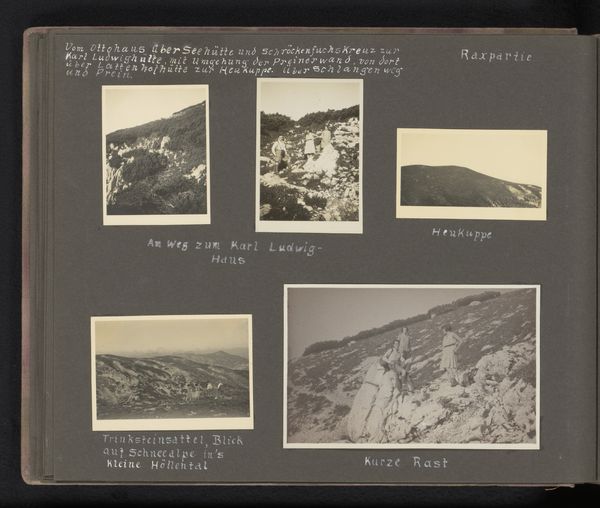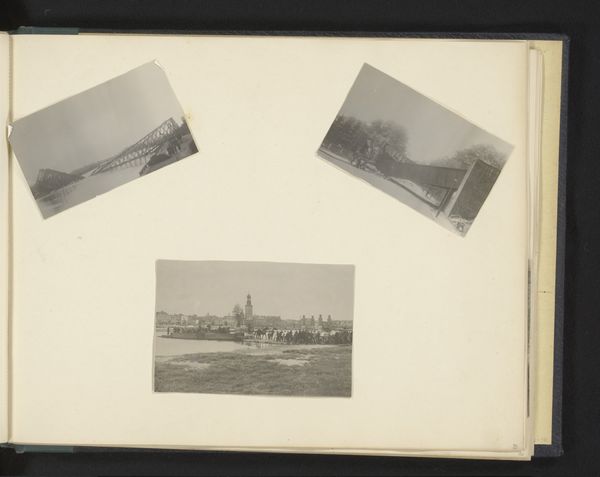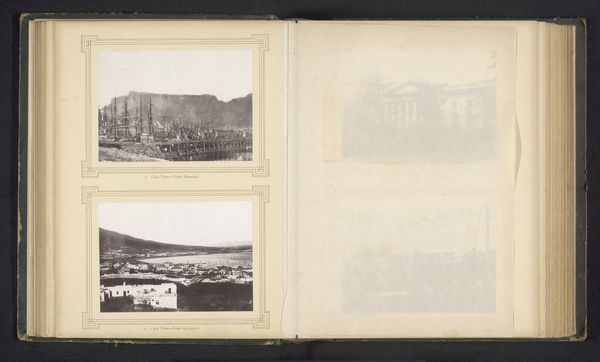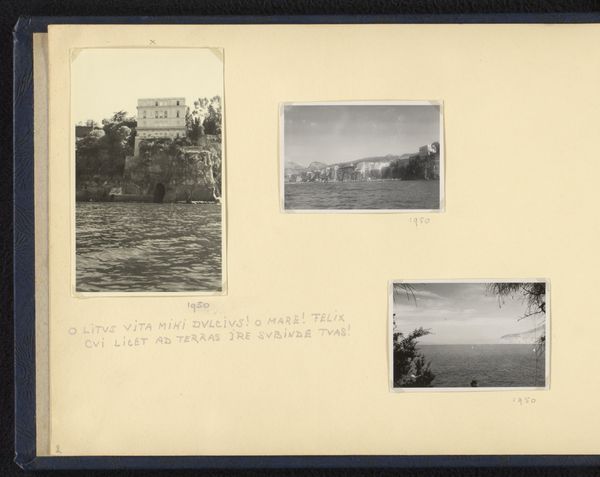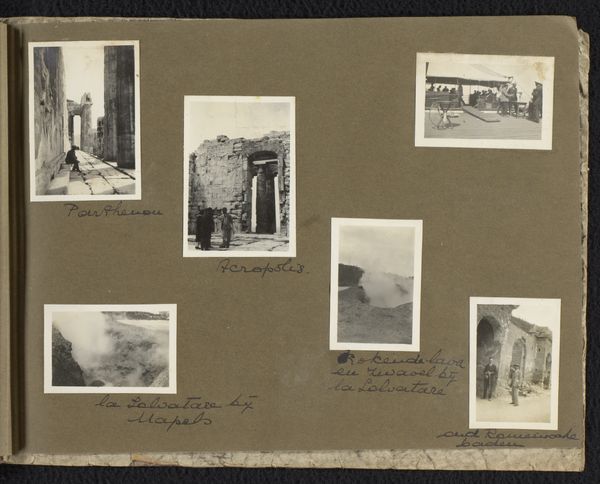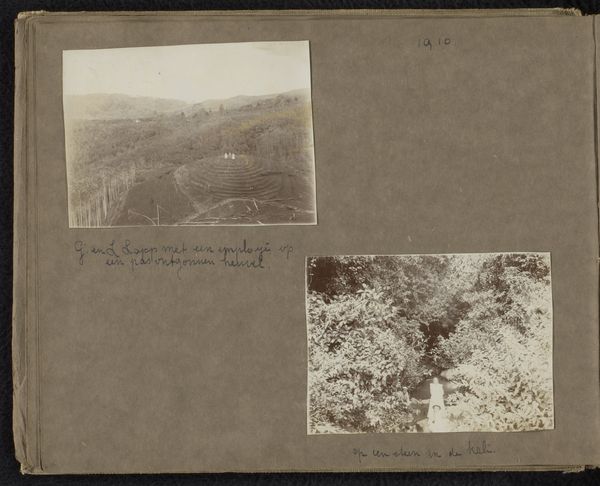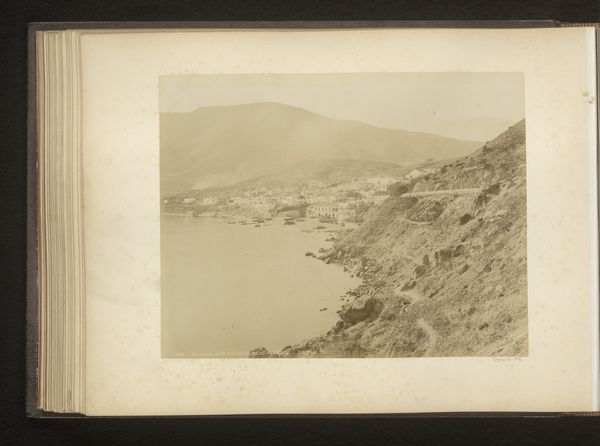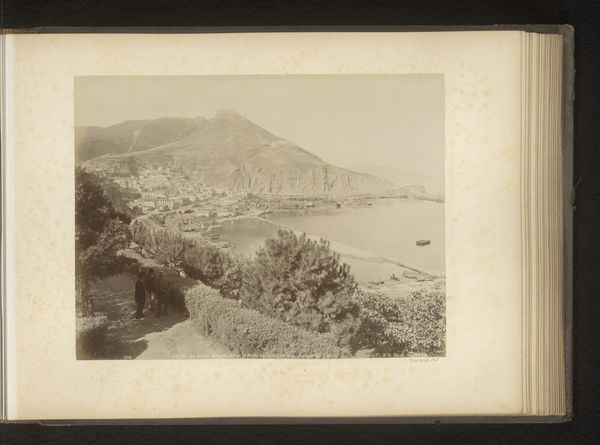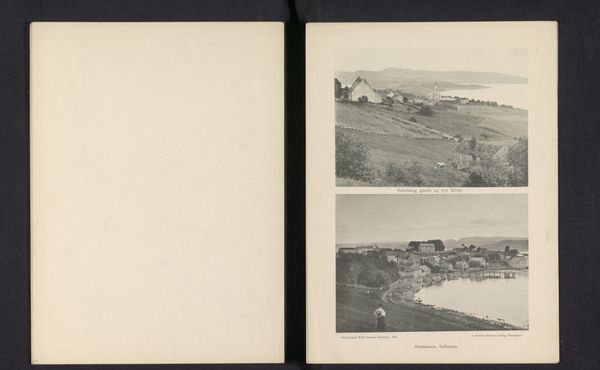
Loentje en Frank Furnée met vrienden in de Rivièra, waaronder Monte Carlo 1930
0:00
0:00
print, photography, albumen-print
#
portrait
# print
#
landscape
#
photography
#
cityscape
#
albumen-print
Dimensions: height 260 mm, width 325 mm
Copyright: Rijks Museum: Open Domain
Curator: I’m immediately struck by the intimate feel of this album page, its images documenting a trip along the Riviera in 1930. There's a distinct aura of leisure here. What do you think? Editor: It's definitely bourgeois leisure made manifest. But I’m interested in the materiality itself – albumen prints pasted onto a page. Think of the hands involved, the labor in creating not just one photograph but an entire narrative. Curator: Absolutely. The page, titled "Loentje en Frank Furnée met vrienden in de Rivièra, waaronder Monte Carlo" serves almost as a personal travelogue, documenting the couple and their companions amidst the glamour of the French and Italian Riviera. I find myself wondering who these people are and their stories. Editor: The albumen print process speaks volumes about consumption and class in the early 20th century. These photos aren't mass-produced; they signify privilege – the leisure to travel, the means to document it so meticulously. Look at the high vantage point in the cityscape image! Curator: It's true. And the album format is really interesting because it points to the creation of a curated self. The selection and arrangement of the photographs tell a particular story, they control their narrative. Editor: And who is being excluded from the story? The photographic medium became much more democratized as the 20th century progressed, but there is a sense that the access to this level of image making remained limited for working-class groups. Curator: Precisely, those whose labor underpinned the luxury represented in these scenes are notably absent. We see landscapes, cityscapes, but almost exclusively wealthy figures enjoying those vistas. Editor: Right. These images were tools for asserting a certain identity in a rapidly changing world, fixing themselves and their privileged positions in a photographic way. The choice to use albumen prints, a labor-intensive and relatively expensive process even at the time, speaks volumes. Curator: These are photographic prints presented and arranged in an intimate context, that when taken together point to so much beyond face value. It asks who is producing art for who, and who has access to its production? Editor: Agreed. Understanding its production deepens my view. This single album page becomes more than just family holiday snaps, but rather an insight into consumption, identity and social stratification. Curator: Thank you, this has certainly been enlightening to hear! Editor: You too, and thank you for giving these fascinating individuals a space to speak to contemporary theory!
Comments
No comments
Be the first to comment and join the conversation on the ultimate creative platform.



